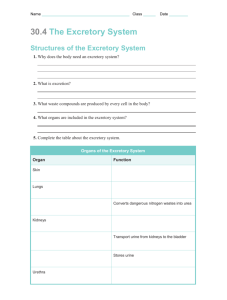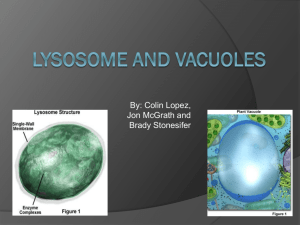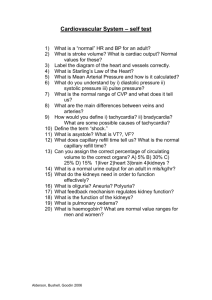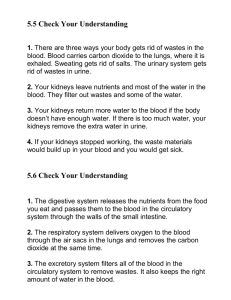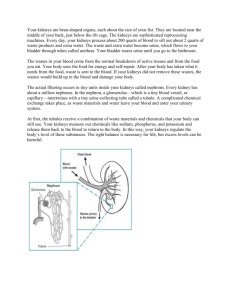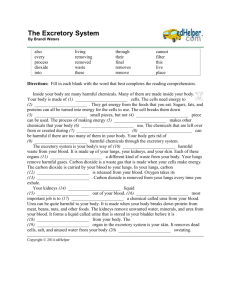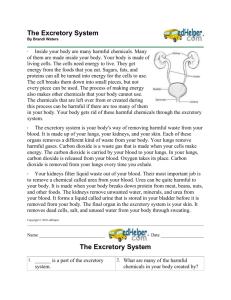Waste Removal
advertisement
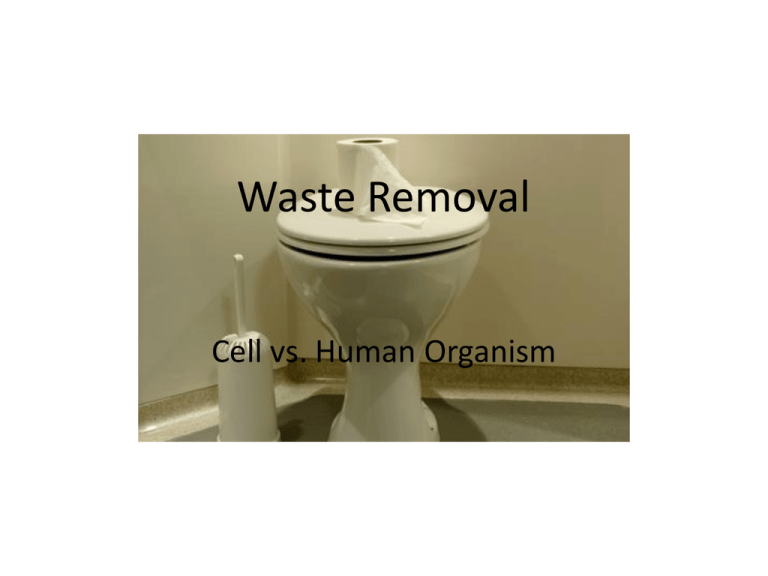
Waste Removal Cell vs. Human Organism Human Waste Removal • • • • Excretory (Urinary) System Digestive System Respiratory System Integumentary System Human Excretory (Urinary) System • Kidneys - The human kidneys are the major organs of bodily excretion. The product of the kidneys is urine. Kidney Function • The kidneys filter the bloodstream in order to get all of the toxins out of your body, and also regulate certain body fluids. • Kidneys are vital organs that function to keep the blood clean and maintain chemical balance within. Human Digestive System Also Gets Rid of Waste • Liver - filters out harmful substances and turns them into bile. • Food travels to the esophagus, stomach and intestines. After most of the nutrients are removed from the food mixture there is waste left over — this excess exits the body through the anus in the form of stool. Digestive System Human Respiratory System • Rids the body of the cellular waste carbon dioxide. Integumentary System (Skin) • Sweat rids the body of extra salts and some other impurities. How Cells Get Rid of Waste • • • • Vacuole Lysosome Diffusion Also note that in cellular respiration, the mitochondria takes in Oxygen + Glucose and releases ATP (energy), Water (waste) and Carbon Dioxide (waste) Cell Vacuole • Vacuole – membrane-bound sac that plays roles in intracellular digestion and the release of cellular waste products. In animal cells, vacuoles are generally small. Cell Lysosome • Lysosome - they digest worn out or excess organelles, food particles and viruses or bacteria. They fuse with vacuoles and dispense their enzymes into those vacuoles, digesting their contents. Cell Diffusion • Diffusion takes away the waste carbon dioxide produced by the cell. Diffusion is simply the movement of substances from an area of higher concentration to an area of lower concentration.

